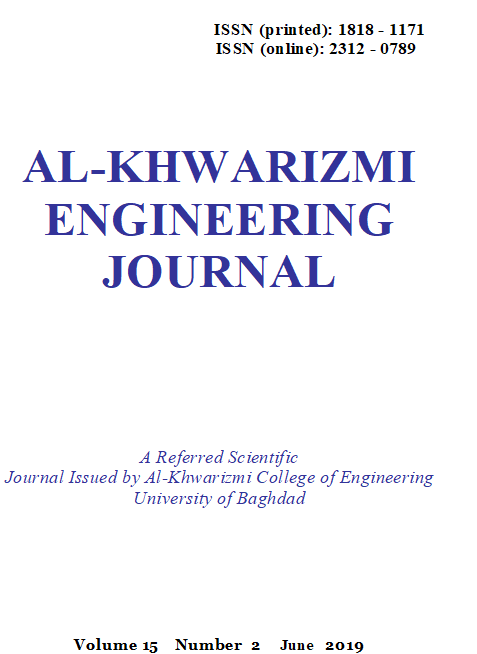Motion Control of Three Links Robot Manipulator (Open Chain) with Spherical Wrist
DOI:
https://doi.org/10.22153/kej.2019.12.001Abstract
Robot manipulator is a multi-input multi-output system with high complex nonlinear dynamics, requiring an advanced controller in order to track a specific trajectory. In this work, forward and inverse kinematics are presented based on Denavit Hartenberg notation to convert the end effector planned path from cartesian space to joint space and vice versa where a cubic spline interpolation is used for trajectory segments to ensure the continuity in velocity and acceleration. Also, the derived mathematical dynamic model is based on Eular Lagrange energy method to contain the effect of friction and disturbance torques beside the inertia and Coriolis effect. Two types of controller are applied ; the nonlinear computed torque control (CTC) and the simpler form of its Proportional Derivative plus Gravity (PD+G) where they are designed to reduce the tracking trajectory errors which tend to zero where the used Kp and Kv gains are 900,60. Also, the RMS errors for tracking a step input of CTC were equal to [2.5E-14, 4.4E-14, 5.0E-14, -4.7E-14, -3.9E-14, -4.6E-14] (deg) and of PD+G were equal to [-1.77E-5, -1.22E-6, -4.28E-6, -8.97E-6, -1.32E-5, 1.05E-5] (deg) for joints one to six, respectively. The results show that CTC is more accurate but requires additional acceleration input and is more computationally extensive and PD+G controller is performed with acceptable tracking errors in manipulator position control applications.
Downloads
Published
Issue
Section
License
Copyright: Open Access authors retain the copyrights of their papers, and all open access articles are distributed under the terms of the Creative Commons Attribution License, which permits unrestricted use, distribution, and reproduction in any medium, provided that the original work is properly cited. The use of general descriptive names, trade names, trademarks, and so forth in this publication, even if not specifically identified, does not imply that these names are not protected by the relevant laws and regulations. While the advice and information in this journal are believed to be true and accurate on the date of its going to press, neither the authors, the editors, nor the publisher can accept any legal responsibility for any errors or omissions that may be made. The publisher makes no warranty, express or implied, with respect to the material contained herein.
















